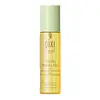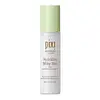What's inside
What's inside
 Key Ingredients
Key Ingredients

 Benefits
Benefits

 Concerns
Concerns

 Ingredients Side-by-side
Ingredients Side-by-side

Water
Skin ConditioningCitrus Aurantium Dulcis Flower Water
Skin ConditioningGlycerin
HumectantDipropylene Glycol
HumectantButylene Glycol
HumectantNiacinamide
SmoothingPEG-60 Hydrogenated Castor Oil
Emulsifying1,2-Hexanediol
Skin ConditioningCaprylyl Glycol
EmollientEthylhexylglycerin
Skin ConditioningAllantoin
Skin ConditioningMagnesium Ascorbyl Phosphate
AntioxidantCitric Acid
BufferingSodium Citrate
BufferingCitrus Grandis Peel Oil
MaskingAdenosine
Skin ConditioningTropolone
Skin ConditioningDisodium EDTA
Arginine
MaskingLavandula Angustifolia Oil
MaskingCitrus Sinensis Peel Oil Expressed
PerfumingSodium Hyaluronate
HumectantCitrus Aurantifolia Oil
CleansingGlycyrrhiza Glabra Root Extract
BleachingSodium Starch Octenylsuccinate
AbsorbentMaltodextrin
AbsorbentCalcium Pantothenate
Sodium Ascorbyl Phosphate
AntioxidantTocopheryl Acetate
AntioxidantPramoxine Hydrochloride
Silica
AbrasiveWater, Citrus Aurantium Dulcis Flower Water, Glycerin, Dipropylene Glycol, Butylene Glycol, Niacinamide, PEG-60 Hydrogenated Castor Oil, 1,2-Hexanediol, Caprylyl Glycol, Ethylhexylglycerin, Allantoin, Magnesium Ascorbyl Phosphate, Citric Acid, Sodium Citrate, Citrus Grandis Peel Oil, Adenosine, Tropolone, Disodium EDTA, Arginine, Lavandula Angustifolia Oil, Citrus Sinensis Peel Oil Expressed, Sodium Hyaluronate, Citrus Aurantifolia Oil, Glycyrrhiza Glabra Root Extract, Sodium Starch Octenylsuccinate, Maltodextrin, Calcium Pantothenate, Sodium Ascorbyl Phosphate, Tocopheryl Acetate, Pramoxine Hydrochloride, Silica
Water
Skin ConditioningGlycerin
HumectantEthylhexyl Palmitate
EmollientDipropylene Glycol
HumectantCetyl Ethylhexanoate
EmollientPhenoxyethanol
PreservativePolyglyceryl-10 Oleate
Skin ConditioningEthylhexylglycerin
Skin ConditioningPEG-60 Hydrogenated Castor Oil
EmulsifyingCetearyl Isononanoate
EmollientAllantoin
Skin ConditioningCeteareth-20
CleansingTrideceth-10
CleansingHydrolyzed Glycosaminoglycans
HumectantHydrogenated Lecithin
EmulsifyingGlyceryl Stearate
EmollientCeteareth-12
EmulsifyingCetyl Alcohol
EmollientStearyl Alcohol
EmollientCetyl Palmitate
EmollientDisodium EDTA
Parfum
MaskingCitric Acid
BufferingBenzoic Acid
MaskingLecithin
EmollientAvena Strigosa Seed Extract
Skin Conditioning1,2-Hexanediol
Skin ConditioningSodium Hyaluronate
HumectantPotassium Sorbate
PreservativeWater, Glycerin, Ethylhexyl Palmitate, Dipropylene Glycol, Cetyl Ethylhexanoate, Phenoxyethanol, Polyglyceryl-10 Oleate, Ethylhexylglycerin, PEG-60 Hydrogenated Castor Oil, Cetearyl Isononanoate, Allantoin, Ceteareth-20, Trideceth-10, Hydrolyzed Glycosaminoglycans, Hydrogenated Lecithin, Glyceryl Stearate, Ceteareth-12, Cetyl Alcohol, Stearyl Alcohol, Cetyl Palmitate, Disodium EDTA, Parfum, Citric Acid, Benzoic Acid, Lecithin, Avena Strigosa Seed Extract, 1,2-Hexanediol, Sodium Hyaluronate, Potassium Sorbate
 Reviews
Reviews

Ingredients Explained
These ingredients are found in both products.
Ingredients higher up in an ingredient list are typically present in a larger amount.
1,2-Hexanediol is a synthetic liquid and another multi-functional powerhouse.
It is a:
- Humectant, drawing moisture into the skin
- Emollient, helping to soften skin
- Solvent, dispersing and stabilizing formulas
- Preservative booster, enhancing the antimicrobial activity of other preservatives
Allantoin is a soothing ingredient known for its protective and moisturizingg properties. Because of this, it is often added to products with strong active ingredients.
Studies show higher concentrations of this ingredient can promote wound healing.
Though it can be derived from the comfrey plant, allantoin is produced synthetically for cosmetic products to ensure purity.
Learn more about AllantoinCitric Acid is an alpha hydroxy acid (AHA) naturally found in citrus fruits like oranges, lemons, and limes.
Like other AHAs, citric acid can exfoliate skin by breaking down the bonds that hold dead skin cells together. This helps reveal smoother and brighter skin underneath.
However, this exfoliating effect only happens at high concentrations (20%) which can be hard to find in cosmetic products.
Due to this, citric acid is usually included in small amounts as a pH adjuster. This helps keep products slightly more acidic and compatible with skin's natural pH.
In skincare formulas, citric acid can:
While it can provide some skin benefits, research shows lactic acid and glycolic acid are generally more effective and less irritating exfoliants.
Most citric acid used in skincare today is made by fermenting sugars (usually from molasses). This synthetic version is identical to the natural citrus form but easier to stabilize and use in formulations.
Read more about some other popular AHA's here:
Learn more about Citric AcidDipropylene Glycol is a synthetically created humectant, stabilizer, and solvent.
This ingredient helps:
Dipropylene glycol is technically an alcohol, but it belongs to the glycol family (often considered part of the ‘good’ alcohols). This means it is hydrating and gentle on skin unlike drying solvent alcohols like denatured alcohol.
As a masking agent, Dipropylene Glycol can be used to cover the smell of other ingredients. However, it does not have a scent.
Studies show Dipropylene Glycol is considered safe to use in skincare.
Learn more about Dipropylene GlycolDisodium EDTA plays a role in making products more stable by aiding other preservatives.
It is a chelating agent, meaning it neutralizes metal ions that may be found in a product.
Disodium EDTA is a salt of edetic acid and is found to be safe in cosmetic ingredients.
Learn more about Disodium EDTAEthylhexylglycerin (we can't pronounce this either) is commonly used as a preservative and skin softener. It is derived from glyceryl.
You might see Ethylhexylglycerin often paired with other preservatives such as phenoxyethanol. Ethylhexylglycerin has been found to increase the effectiveness of these other preservatives.
Glycerin is already naturally found in your skin. It helps moisturize and protect your skin.
A study from 2016 found glycerin to be more effective as a humectant than AHAs and hyaluronic acid.
As a humectant, it helps the skin stay hydrated by pulling moisture to your skin. The low molecular weight of glycerin allows it to pull moisture into the deeper layers of your skin.
Hydrated skin improves your skin barrier; Your skin barrier helps protect against irritants and bacteria.
Glycerin has also been found to have antimicrobial and antiviral properties. Due to these properties, glycerin is often used in wound and burn treatments.
In cosmetics, glycerin is usually derived from plants such as soybean or palm. However, it can also be sourced from animals, such as tallow or animal fat.
This ingredient is organic, colorless, odorless, and non-toxic.
Glycerin is the name for this ingredient in American English. British English uses Glycerol/Glycerine.
Learn more about GlycerinPeg-60 Hydrogenated Castor Oil comes from hydrogenated castor oil. It is a solubilizer and emulsifier.
As a solubilizer, it helps dissolve ingredients into a water-based version. It is also an emulsifer. Emulsifier help prevent oils and water from separating. Both these properties help create evenly-spread and uniform products.
Basically, Peg-60 Hydrogenated Castor Oil helps hold ingredients together.
Learn more about PEG-60 Hydrogenated Castor OilSodium Hyaluronate is hyaluronic acid's salt form. It is commonly derived from the sodium salt of hyaluronic acid.
Like hyaluronic acid, it is great at holding water and acts as a humectant. This makes it a great skin hydrating ingredient.
Sodium Hyaluronate is naturally occurring in our bodies and is mostly found in eye fluid and joints.
These are some other common types of Hyaluronic Acid:
Learn more about Sodium HyaluronateWater. It's the most common cosmetic ingredient of all. You'll usually see it at the top of ingredient lists, meaning that it makes up the largest part of the product.
So why is it so popular? Water most often acts as a solvent - this means that it helps dissolve other ingredients into the formulation.
You'll also recognize water as that liquid we all need to stay alive. If you see this, drink a glass of water. Stay hydrated!
Learn more about Water